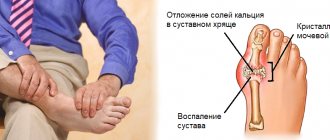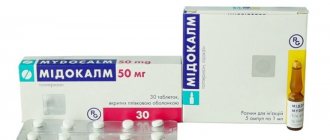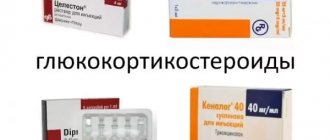Movalis is a non-steroidal anti-inflammatory drug that has a complex effect on all manifestations of inflammation. Gives anti-inflammatory, analgesic and antipyretic effect. The drug relieves unpleasant subjective sensations, and also breaks pathogenetic chains in the development of inflammatory reactions of various origins and localization. The main mechanism of action of meloxicam on inflammatory mediators is inhibition of prostaglandin synthesis.
Release form and composition
The drug Movalis is available in the form of tablets, injection solution and rectal suppositories. Each release form is more effective for certain pathologies.
Movalis tablets 15 mg, 10 or 20 pieces - contain the active ingredient meloxicam in an amount of 15 mg, as well as excipients: lactose monohydrate - 20 mg, sodium citrate dihydrate - 30 mg, MCC (microcrystalline cellulose) - 87.3 mg, povidone K25 - 9 mg, colloidal silicon dioxide - 3 mg, crospovidone - 14 mg, magnesium stearate - 1.7 mg.
Movalis tablets 7.5 mg, 10 pieces - contain the active ingredient meloxicam in an amount of 7.5 mg, as well as excipients: lactose monohydrate - 23.5 mg, sodium citrate dihydrate - 15 mg, MCC (microcrystalline cellulose) - 102 mg, povidone K25 - 10.5 mg, colloidal silicon dioxide - 3.5 mg, crospovidone - 16.3 mg, magnesium stearate - 1.7 mg.
Rectal suppositories Movalis 15 mg, 6 pieces - each suppository contains 15 mg of meloxicam and excipients: Suppocire BP solid fat, polyethoxylated ricin oil, hydrogenated.
Rectal suppositories Movalis 7.5 mg, 6 pieces - contain 7.5 mg of meloxicam and excipients: Suppocire BP solid fat, polyethoxylated ricin oil, hydrogenated.
Movalis injection solution 15 mg/1.5 ml, 3 or 5 ampoules - this release form includes meloxicam 15 mg, as well as excipients: meglumine, poloxamer 188, sodium chloride, sodium hydroxide E524, glycine E640, glycofurol, water for injection, sterile, up to 1.5 ml.
Oral suspension Movalis 7.5 mg/5 ml - 5 ml of the drug contains the active ingredient meloxicam 7.5 mg, as well as excipients: colloidal silicon dioxide - 50.00 mg, hyaetellose - 5.00 mg, sorbitol - 1750 .00 mg, glycerol - 750.00 mg, xylitol - 750.00 mg, sodium dihydrogen phosphate dihydrate - 100.00 mg, sodium saccharinate - 0.50 mg, sodium benzoate - 7.50 mg, citric acid monohydrate - 6.00 mg, raspberry flavor - 10.00 mg, purified water - 2463.50 mg.
pharmachologic effect
Pharmacodynamics
Movalis contains meloxicam, the main effect of which is the ability to block the synthesis and release of prostaglandins at each stage of their biochemical transformation. The ability to block COX-2, which is one of the main mediators of acute phase inflammation, stands out separately.
The effect of the drug is specific, so COX-1 is not inhibited, which reduces the number of side effects. The highest intensity of exposure is observed at the site of inflammation, and not in peripheral tissues.
It is noted that due to the confirmed high specificity, Movalis does not cause the classic side effect of non-steroidal anti-inflammatory drugs in the form of an effect on platelet aggregation, which avoids an increased risk of bleeding.
Pharmacokinetics
The drug has high bioavailability - 90%, absorption occurs completely in the intestine. The maximum concentration in blood plasma is achieved 5-6 hours after oral administration and 2-3 hours after the injection. Moreover, the bioavailability of injection forms is 100%. Absorption of the drug does not depend on food intake.
Meloxicam quickly passes into a chemically bound form, having a high affinity for proteins, in particular albumins. The binding rate is 99%. Active forms of the drug penetrate into the synovial fluid of the joint capsules, where the concentration is reduced by half compared to blood plasma. With prolonged and systematic use, the concentration in the synovial fluid increases.
The biotransformation of meloxicam occurs mainly in the liver with the participation of cytochromes of the CYP 2C9 and CYP 3A4 families. The toxicity of the drug does not increase during its metabolism; the 4 main metabolites are pharmacologically inactive and are excreted in the urine. Elimination occurs in feces and urine, about 5% of the substance is excreted unchanged.
Pharmacodynamics and pharmacokinetics
Pharmacodynamics: what is Meloxicam and how does it work?
Wikipedia states that the mechanism of action of the drug is based on its ability to suppress the production of Pg. Its pronounced anti-inflammatory activity has been established in all standard models of inflammation.
In vivo, it suppresses the synthesis of Pg in the pathological focus to a greater extent than in the kidneys or in the gastric mucosa, which is associated with a more selective inhibition of the COX-1 isoenzyme compared to COX-2.
It is generally accepted that the therapeutic effectiveness of NSAIDs is due to the inhibition of COX-2, while the renal and gastrointestinal side effects of these drugs arise from the suppression of the constitutively present isoenzyme COX-1.
Selectivity for COX-2 has been confirmed in various tests, both in vitro and ex vivo. In ex vivo models, liposaccharide-stimulated production of PgE2, which is controlled by COX-2, was more actively suppressed than the production of thromboxane, which is involved in the hemocoagulation process, which is controlled by COX-1. The effects were dose-dependent.
It has also been shown in ex vivo models that, at recommended doses, the drug does not alter bleeding time or affect platelet . This fundamentally distinguishes Meloxicam from Ibuprofen , Indomethacin , Diclofenac and Naproxen .
Clinical studies have established that NSAID gastropathy develops significantly less frequently when taking Meloxicam than when taking other NSAIDs. Vomiting, abdominal pain, nausea, and dyspepsia were reported less frequently in patients taking Meloxicam than in patients taking other NSAIDs.
meloxicam- related upper gastrointestinal bleeding, perforation , and was low and dose-related.
Pharmacokinetics:
- absorption from the digestive canal is good, does not change with simultaneous food intake;
- bioavailability - 89% (when taken orally);
- TSmax for a single dose is 5-6 hours, during the period of steady state pharmacokinetic parameters (when taking Meloxicam in tablets and suspension form) - 5-6 hours;
- the time to achieve a steady state of pharmacokinetic parameters with repeated use is 3-5 days;
- binding to albumin (plasma proteins) - 99%; T1/2 (average) - 20 hours.
Dosing 1 r./day. leads to an average plasma concentration with slight fluctuations in peak values: for 7.5 mg within 0.4-1, for 15 mg - within 0.8-2 μg/ml (Cmax and Cmin during the period of steady state pharmacokinetic parameters).
Honey concentrations of the drug after systematic use for more than six months are similar to the concentrations observed after 14 days. oral dose 15 mg.
The pharmacokinetics indicators (Cmax, Cmin, TCmax) of Meloxicam in the form of suppositories are similar to those for tablets.
The drug penetrates well into the synovium.
Metabolism occurs in the liver. The resulting substances are pharmacologically inactive. Meloxicam is excreted equally in urine and feces, in pure form - up to 5% of the dose. Only trace concentrations of the pure substance are found in urine.
Indications for use of Movalis
The medicine is used to relieve symptoms of inflammation, including fever, pain, local swelling, and redness. The drug is especially effective in the symptomatic treatment of diseases of the musculoskeletal system, degenerative diseases of the skeleton and muscular system, with causalgic pain and other diseases. The main diseases that are indications for the use of Movalis, as well as dosages to achieve maximum therapeutic effect, are listed below. It is not recommended to exceed the dosage of 15 mg/day. Indications:
- Movalis for osteochondrosis is indicated for use in tablet form at 15 mg/day; with a decrease in symptoms, the dose can be reduced to 7.5 mg/day.
- Movalis for ankylosing spondylitis can be used at a dosage of 15 mg/day orally, but in patients with an increased risk from the cardiovascular system, the therapeutic dose should start at 7.5 mg/day and increase if necessary under the supervision of the attending physician.
- Movalis for neuralgia of any origin can be used symptomatically to relieve pain at a dose of 7.5 mg/day, one tablet once a day.
- Movalis for lower back pain is recommended only when local painkillers are not effective. In this case, a dose of 7.5 mg/day is recommended.
- For pinched nerves, Movalis is indicated for pain relief at a dose of 7.5 mg/day; you can use one tablet or one rectal suppository of 7.5 mg, respectively.
- Movalis for a spinal hernia with progressive pain syndrome, lumbago or lumbar ischialgia, an injection of Movalis 7.5 mg once or 15 mg tablet forms is indicated.
- Movalis for radiculitis is used in doses of 7.5 or 15 mg per day; if this dosage form is not effective, you can use injections of 15 mg once a day. The course of injection treatment should not last more than 3 days with a maximum daily dose of 15 mg.
- Movalis for arthritis, including rheumatoid origin, is used at 15 mg/day, one 15 mg tablet once in the morning or two 7.5 mg tablets in the morning and evening. In the presence of an acute attack of rheumatoid arthritis, injections may be used, but only in cases where tablet forms and suppositories cannot be used or are not effective. Movalis injections are limited to one injection of 15 mg/day.
The justification for using Movalis should be determined by a physician based on the specific pathological condition that can be treated. Dose adjustments are made based on the patient's feedback on how they feel, the reduction of symptoms, or the presence of adverse reactions.
Movalis solution for intramuscular administration 15 mg/1.5 ml in ampoules No. 3
Name
Movalis solution for intramuscular injection. 15mg/1.5ml per amp. in pack No. 3
Description
A transparent, yellow with a green tint solution, practically free of particles, in colorless 2 ml ampoules.
Main active ingredient
Meloxicam
Release form
Solution
Dosage
15.0 mg
Pharmacological properties
Pharmacodynamics
Meloxicam is a non-steroidal anti-inflammatory drug (NSAID) of the oxicam family with anti-inflammatory, analgesic and antipyretic properties. The anti-inflammatory activity of meloxicam has been demonstrated in classical models of inflammation. As with other NSAIDs, the exact mechanism of action remains unknown. However, there is at least one common mechanism of action that is common to all NSAIDs (including meloxicam): inhibition of the biosynthesis of prostaglandins, known as mediators of inflammation.
Pharmacokinetics
Absorption Meloxicam is completely absorbed after intramuscular administration. The relative bioavailability compared to the oral route of administration is almost 100%. In this regard, there is no need to adjust the dose of the drug when switching from intramuscular to oral administration. Peak plasma concentrations after an intramuscular injection of 15 mg of the drug were reached after 1-6 hours and were about 1.6-1.8 μg/ml. Distribution Meloxicam binds well to plasma proteins, mainly albumin (99%). Meloxicam penetrates into the synovial fluid, reaching concentrations corresponding to approximately 50% of the concentration in the blood plasma. The volume of distribution is low, approximately 11 L after intramuscular or intravenous administration, with an interindividual coefficient of variation of approximately 7-20%. Biotransformation Meloxicam is extensively metabolized in the liver. Four different pharmacodynamically inactive metabolites of meloxicam were detected in urine. The main metabolite, 5-carboxymeloxicam (60% of the administered dose), is formed by oxidation of the intermediate metabolite 5-hydroxymethylmeloxicam, which is also excreted, but to a lesser extent (9% of the administered dose). In vitro studies have shown that CYP 2C9 plays an important role in this metabolic transformation, and the CYP 3A4 isoenzyme is of additional importance. The activity of peroxidase in the patient's body is likely responsible for the appearance of two other metabolites, which account for 16% and 4% of the administered dose, respectively. Excretion Meloxicam is excreted primarily in the form of metabolites, equally in feces and urine. In unchanged form, less than 5% of the daily dose is excreted in feces; in urine, unchanged, the drug is found only in trace amounts. The average half-life of meloxicam varies from 13 to 25 hours after oral, intramuscular and intravenous administration. The total plasma clearance is about 7-12 ml/min. after a single oral, intravenous or rectal administration. Linearity/non-linearity Linearity of meloxicam pharmacokinetics has been demonstrated at therapeutic doses administered orally or intramuscularly ranging from 7.5 to 15 mg. Special groups of patients Patients with hepatic/renal insufficiency Hepatic insufficiency and moderate renal insufficiency do not have a significant effect on the pharmacokinetics of meloxicam. In patients with moderate renal impairment, a higher overall clearance of the drug was observed. In patients with end-stage renal failure, a decrease in binding to plasma proteins was observed. In end-stage renal failure, an increase in volume of distribution may result in higher concentrations of free meloxicam, so in these patients the daily dose should not exceed 7.5 mg. Elderly Patients Pharmacokinetic parameters for elderly male patients were similar to those for younger male patients. Elderly female patients had a higher AUC and longer half-life compared to younger patients of both sexes. In elderly patients, the average plasma clearance during steady-state pharmacokinetics is slightly lower than in younger patients.
Indications for use
Short-term symptomatic treatment of exacerbation of rheumatoid arthritis or ankylosing spondylitis if it is impossible to use the drug orally or rectally.
Directions for use and doses
Doses Injection 15 mg once daily. DO NOT EXCEED 15 mg/day. Treatment is usually limited to one injection; in exceptional cases, the duration of treatment with this dosage form can reach 2-3 days (i.e. in cases where oral or rectal administration is not possible). Minimizing the risk of developing undesirable effects is possible by using the minimum effective dose for the shortest period of time necessary to control symptoms. The patient's need for the drug should be periodically assessed for symptom relief and response to therapy. Special groups of patients Elderly patients and patients with an increased risk of adverse reactions The recommended dose for elderly patients is 7.5 mg per day. Patients with an increased risk of adverse reactions should begin treatment with a dosage of 7.5 mg per day (1/2 ampoule containing 1.5 ml). Impaired renal function In patients with severe renal failure on dialysis, the dose should not exceed 7.5 mg per day (1/2 ampoule containing 1.5 ml). No dose reduction is required in patients with mild to moderate renal impairment (i.e., patients with creatinine clearance greater than 25 mL/min) (for recommendations regarding patients with severe renal impairment not undergoing dialysis, see section " Contraindications"), Impaired liver function In patients with mild to moderate hepatic impairment, no dose reduction is required (for recommendations regarding patients with severe hepatic impairment, see section "Contraindications"). Children and adolescents MOVAPIS solution for injection 15 mg/1.5 ml is contraindicated in children and adolescents under 18 years of age. Directions for use: Intramuscular administration. The injection solution should be injected slowly, deeply intramuscularly into the upper outer quadrant of the buttock, observing aseptic rules. In case of repeated administration, it is recommended to alternate injections on the left and right. Before injection, you must ensure that the tip of the needle is not in a blood vessel. In case of severe pain during injection, administration should be stopped immediately. If you have a hip joint prosthesis, it is recommended to administer the injection on the other side. You can only use a clear solution without any inclusions.
Use during pregnancy and lactation
Pregnancy Suppression of prostaglandin synthesis may have undesirable effects on pregnancy and fetal development. Data from epidemiological studies indicate an increased risk of spontaneous abortion, heart defects and gastroschisis in the fetus after the use of prostaglandin synthesis inhibitors in early pregnancy. The absolute risk of developing cardiovascular defects increased from less than 1% to 1.5%. This risk increases with increasing dose and duration of therapy. Animal studies have shown that administration of a prostaglandin synthesis inhibitor leads to an increase in pre- and post-implantation losses and feto-embryonic lethality. In addition, in animals receiving a prostaglandin synthesis inhibitor during the period of organogenesis, an increase in the incidence of various malformations, including those of the cardiovascular system, was recorded. The use of meloxicam during the first and second trimester of pregnancy is not recommended unless absolutely necessary. When using meloxicam by a woman planning a pregnancy or during the first and second trimester of pregnancy, the dose of the drug should be the smallest and the duration of treatment as short as possible. In the lll trimester of pregnancy, the use of any inhibitors of prostaglandin synthesis can lead to the following disorders: in the fetus: due to toxic effects on the cardiopulmonary system: premature closure of the ductus arteriosus and the development of pulmonary hypertension; renal dysfunction, with further development of renal failure with oligohydroamniosis. in the mother and newborn when used at the end of pregnancy: the duration of bleeding may increase, and the antiaggregation effect can develop even at a low dosage; decreased contractility of the uterus, and, as a result, increased duration of labor. Therefore, meloxicam is contraindicated in the third trimester of pregnancy. Breastfeeding Period Despite the lack of data on experience with the use of meloxicam, it is known that NSAIDs pass into breast milk. Therefore, these medications are not recommended during breastfeeding. Fertility The use of meloxicam, like other drugs that block cyclooxygenase/prostaglandin synthesis, may affect fertility, so this drug is not recommended for women planning pregnancy. If the ability to conceive in women is impaired or when undergoing examination for infertility, it is necessary to consider discontinuing meloxicam.
Precautionary measures
Adverse effects can be minimized by administering the lowest effective dose needed to control symptoms for the shortest period of time. In case of insufficient therapeutic effect, you should not exceed the recommended maximum daily dose or prescribe additional NSAIDs, because this may lead to increased toxicity in the absence of therapeutic benefit. Concomitant use of meloxicam with other NSAIDs, including selective cyclooxygenase-2 inhibitors, should be avoided. Meloxicam is not suitable for the relief of acute pain. If there is no clinical improvement after several days of taking the drug, it is recommended to re-evaluate the prescribed treatment. It is necessary to ensure that patients with a history of esophagitis, gastritis and/or peptic ulcer are cured. Careful monitoring of these patients receiving meloxicam is necessary in order to timely detect relapse of the disease. Effects on the Gastrointestinal Tract As with other NSAIDs, potentially fatal gastrointestinal bleeding, ulceration or perforation may occur at any time during treatment with or without prior symptoms or a history of serious gastrointestinal disease. The risk of gastrointestinal bleeding, ulceration, or perforation is greater with increasing doses of NSAIDs in patients with a history of ulcers, especially those complicated by bleeding or perforation, and in elderly patients. In such patients, treatment should begin with the lowest effective dose. For such patients, combination therapy with protective drugs (such as misoprostol or proton pump inhibitors) should be considered, as well as for patients who require concomitant use of low-dose aspirin or other drugs that increase the risk of gastrointestinal damage. Patients with a history of gastrointestinal toxicity, especially the elderly, should be informed of any unusual abdominal symptoms (especially gastrointestinal bleeding), especially during the initial stages of treatment. Patients taking medications that may increase the risk of ulceration or bleeding, such as heparin, prescribed for both radical treatment and geriatric practice, or other non-steroidal anti-inflammatory drugs, including acetylsalicylic acid in a single dose? 500 mg or total daily dose? 3 g, simultaneous use of meloxicam is not recommended. If gastrointestinal bleeding or ulceration occurs in patients using meloxicam, treatment should be discontinued. NSAIDs should be prescribed with caution to patients with a history of gastrointestinal diseases (ulcerative colitis, Crohn's disease), as these conditions may be exacerbated. Effect on the cardiovascular system In patients with arterial hypertension and/or a history of mild to moderate congestive heart failure, careful monitoring is recommended as fluid retention and edema have been observed with NSAID therapy. In patients with risk factors, clinical monitoring of blood pressure is recommended at the beginning of therapy, especially at the beginning of treatment with meloxicam. Clinical trial and epidemiological data suggest that the use of some NSAIDs (especially at high doses and in long-term treatment) may be associated with a small increased risk of vascular thrombotic events (such as myocardial infarction or stroke). There is insufficient information to exclude such a risk for meloxicam. Patients with uncontrolled hypertension, congestive heart failure, established coronary artery disease, peripheral arterial disease and/or cerebrovascular disease should be treated with meloxicam only after careful evaluation of the patient's condition. Such an assessment is necessary before initiating long-term treatment in patients with risk factors for cardiovascular disease (eg, hypertension, hyperlipidemia, diabetes mellitus, smokers). Skin reactions Severe skin reactions, including life-threatening ones, including Stevens-Johnson syndrome and toxic epidermal necrolysis, have been reported with the use of meloxicam. Patients should be aware of symptoms and signs and closely monitored for skin reactions. The highest risk of developing these reactions was observed during the first weeks of treatment. Meloxicam should be discontinued at the first symptoms or signs of Stevens-Johnson syndrome or toxic epidermal necrolysis (eg, progressive skin rash, often with blisters, or mucosal lesions). The best treatment outcome for Stevens-Johnson syndrome and toxic epidermal necrolysis was observed with early diagnosis and immediate discontinuation of the suspected drug. Early discontinuation of the drug was associated with a more favorable prognosis. If Stevens-Johnson syndrome or toxic epidermal necrolysis develops while taking meloxicam, this drug should not be re-prescribed to this patient in the future. Liver and kidney function tests As with most NSAIDs, increases in serum transaminases, serum bilirubin or other liver function tests, as well as increases in creatinine and blood urea levels and other laboratory abnormalities have been reported rarely. In most cases, the violations were temporary and unexpressed. The development of a pronounced deviation from the norm or its persistence requires stopping the administration of meloxicam and conducting an appropriate examination. Functional renal failure NSAIDs, by inhibiting the vasodilatory effect of renal prostaglandins, can cause the appearance of functional renal failure as a result of a decrease in glomerular filtration. This reaction is dose-dependent. It is recommended to carefully monitor diuresis and renal function at the beginning of treatment or after increasing the dose in patients with the following risk factors: elderly age; concomitant therapy with ACE inhibitors, angiotensin II antagonists, sartans, diuretics; hypovolemia (regardless of the cause); congestive heart failure; renal failure; nephrotic syndrome; lupus nephropathy; severe liver dysfunction (serum albumin
Interaction with other drugs
Risks associated with hyperkalemia Certain drugs or therapeutic groups may contribute to the development of hyperkalemia: potassium salts, potassium-sparing diuretics, angiotensin-converting enzyme (ACE) inhibitors, angiotensin II receptor antagonists, non-steroidal anti-inflammatory drugs, heparins (low molecular weight or unfractionated), cyclosporine, tacrolimus and trimethoprim. The development of hyperkalemia may depend on the presence of risk factors. The risk of developing hyperkalemia increases with simultaneous use of the above drugs and meloxicam.
Contraindications
The drug is contraindicated in the following cases: hypersensitivity to meloxicam or any excipient; third trimester of pregnancy; children and adolescents under 18 years of age; hypersensitivity to substances with similar effects, for example, NSAIDs, acetylsalicylic acid. Meloxicam should not be prescribed to patients who have experienced symptoms of bronchial asthma, polyps of the nasal mucosa, angioedema or urticaria after administration of acetylsalicylic acid or other NSAIDs; history of gastrointestinal bleeding or gastrointestinal perforation associated with previous NSAID therapy; active phase or recurrent course of gastrointestinal ulcers/bleedings (two or more separate episodes with confirmed ulcers or bleeding); severe liver dysfunction; severe renal failure without dialysis; history of gastrointestinal bleeding, cerebrovascular bleeding or other bleeding disorders; hemostasis disorders or simultaneous treatment with anticoagulants (contraindication for this method of administration); severe heart failure.
Compound
1 ampoule contains: Active substance: meloxicam 15.0 mg. Excipients: meglumine, glycofurol, poloxamer 188 (pluronic F68), sodium chloride, glycine (E640), sodium hydroxide (E524), water for injection.
Overdose
Symptoms Symptoms of acute NSAID overdose are usually limited to lethargy, drowsiness, nausea, vomiting and epigastric pain, which are generally reversible with maintenance therapy. Gastrointestinal bleeding may occur. Severe poisoning may be accompanied by hypertension, acute renal failure, liver function, respiratory depression, coma, seizures, cardiovascular failure and cardiac arrest. Anaphylactoid reactions have been reported during therapeutic use of NSAIDs and may also occur in overdose. Treatment In case of overdose of NSAIDs, patients are recommended symptomatic and supportive therapy. The study showed accelerated elimination of meloxicam with oral administration of 4 g of cholestyramine in 3 doses per day.
Side effect
Clinical trial and epidemiological data suggest that the use of some NSAIDs (especially at high doses and in long-term treatment) may be associated with a small increased risk of vascular thrombotic events (such as myocardial infarction or stroke). Edema, hypertension, and heart failure have been observed with NSAID treatment. Most side effects were observed in the gastrointestinal tract. The development of ulcers, perforation or gastrointestinal bleeding, including death, may occur, especially in elderly patients. Nausea, vomiting, diarrhea, flatulence, constipation, dyspepsia, abdominal pain, melena, hematemesis, ulcerative stomatitis, exacerbation of colitis and Crohn's disease have been reported after use. Gastritis was observed with less frequency. Severe skin adverse reactions have been reported: Stevens-Johnson syndrome and toxic epidermal necrolysis. The incidence of adverse reactions listed below is based on relevant adverse event reports from 27 clinical studies with a treatment duration of at least 14 days. The information is based on clinical studies involving 15,197 patients who took meloxicam at a daily dose of 7.5 or 15 mg for a period of up to one year. Post-marketing adverse reactions are also included. Criteria for assessing the incidence of adverse drug reactions: very often (? 1/10); often (? 1/100,
Storage conditions
Store at a temperature not exceeding 30°C in a place protected from light. Keep out of the reach of children.
Contraindications
It is not recommended to take meloxicam in patients with developed sensitization to the components of the drug. Contraindicated in patients who have developed symptoms of asthma, swelling, nasal breathing problems or urticaria after taking non-steroidal anti-inflammatory drugs, including derivatives of acetylsalicylic and enolic acids. Taking Movalis is contraindicated:
- During the third trimester of pregnancy, the use of drugs based on meloxicam can lead to impaired blood circulation in the fetus, the development of cardiopulmonary failure, pathology of the urinary system, in particular progressive renal failure. During this same period, the medicine can have a detrimental effect on the course of labor.
- Pathology of the gastrointestinal tract, in the presence of gastric bleeding or perforation of an ulcer, especially if they are caused by the systematic use of a non-steroidal anti-inflammatory drug. A history of gastrointestinal bleeding requires recalculation of the dose and use of other classes of drugs.
- Severe liver failure is a direct contraindication, since the drug undergoes biotransformation with the participation of cytochromes and other liver enzymes. Taking Movalis for functional liver failure can lead to the development of complications.
- Severe renal failure without dialysis. It should be borne in mind that during peritoneal dialysis or hemodialysis the drug can be prescribed with caution, as its elimination will occur.
- Ages under 16 years are a direct contraindication to the use of Movalis due to the peculiarities of biotransformation and distribution of the drug, as well as the development of immediate allergic reactions in this age category. It is impossible to select a safe dose for use in such patients without the risk of adverse reactions.
- Disorders of the blood coagulation system, which are manifested by the presence of bleeding that is difficult to stop, a history of cerebrovascular bleeding and are confirmed by the results of laboratory tests.
- Severe heart failure.
- Simultaneous use of anticoagulants.
Side effects
Side effects are classified depending on the affected organs and systems, as well as by frequency of occurrence in a similar way: very common (1 case out of 10), frequent (1 case out of 100); uncommon (1 in 1000), rare (1 in 10,000), very rare (less than 1 in 10,000), unknown (no exact data on the frequency of occurrence).
From the immune system: infrequently - allergic reactions, urticaria, angioedema, polymorphic rash of allergic origin; unknown - anaphylactic reactions, anaphylactic shock.
From the mental side: rarely - mood swings, nightmares; unknown - disorientation, insomnia.
From the nervous system: often - headache; rarely - dizziness, drowsiness.
From the sensory systems: rarely - ringing in the ears, blurred vision, blurred vision; infrequently - dizziness, conjunctivitis.
From the cardiovascular system: infrequently - increased blood pressure; rarely - palpitations; unknown - heart failure associated with the use of non-steroidal anti-inflammatory drugs.
From the respiratory system: rarely - asthma in patients with allergies to acetylsalicylic acid and other non-steroidal anti-inflammatory drugs; unknown - cough.
From the gastrointestinal tract: often - dyspepsia, nausea, vomiting, abdominal pain, constipation, flatulence, diarrhea; uncommon - gastrointestinal bleeding, stomatitis, gastritis, belching; rarely - colitis, ulcer, esophagitis, abnormal laboratory tests of liver function; very rarely - hepatitis; unknown - liver failure.
From the skin and subcutaneous fat: infrequently - angioedema, itching, rash; rarely - Stevens-Johnson syndrome, toxic epidermal necrolysis, urticaria; very rarely - bullous dermatitis, erythema multiforme; unknown - photosensitivity, exfoliative dermatitis.
From the urinary system: uncommon - sodium and water retention, changes in electrolyte balance (hypokalemia), increased creatinine and/or urea in the blood plasma as a marker of decreased renal function; very rarely - acute renal failure; unknown—impaired urinary frequency.
General disorders and disorders at the injection site: often - hardening and pain at the injection site; infrequently - swelling.
What else do you need to know?
According to research, side effects occur less frequently than with the administration of Ibuprofen, Diclofenac and a number of other analogues. The frequency of the most unpleasant complications (ulcers, intestinal perforation) is very low. And yet, a number of patients experience unpleasant sensations from the gastrointestinal tract:
- nausea;
- stomach ache;
- stomach pain;
- dyspepsia;
- bloating;
- vomit;
- colic;
- belching.
In rare cases, changes in blood composition are observed - a decrease in the number of leukocytes, red blood cells, and platelets. With a long course, dizziness, headaches, mood changes, tinnitus, and visual disturbances may occur. In persons with heart disease, arrhythmias, palpitations, rushes of blood to the head, and pressure surges were recorded. If liver function is impaired, an increase in AST and ALT in the blood is possible, and in isolated cases, the development of drug-induced hepatitis.
Overdose
In case of an overdose of the drug Movalis, no specific manifestations are observed. If the permissible dosage of 15 mg/day is exceeded, the likelihood of developing side effects of meloxicam significantly increases.
The main signs of overdose are general malaise, weakness, nausea, vomiting, pain in the epigastric region, defecation disorders, loss of appetite, sweating, tremor, drowsiness or insomnia, itching, palpitations, tachycardia, increased symptoms of the underlying disease.
Overdose cannot be treated due to the lack of a specific antidote. It is recommended to evacuate gastric contents, take absorbent drugs or prokinetics, drink large amounts of fluid, and stimulate the gag reflex. It is worth considering that the elimination and metabolism of meloxicam can be accelerated by taking cholestyramine.
Interaction
The drug Movalis is capable of interacting with drugs at the pharmaceutical, pharmacokinetic and pharmacodynamic stages. Complex mechanisms of distribution and molecular effects on inflammatory mediators can lead to some unexpected effects that should be taken into account when taking the drug Movalis.
Milgamma and Movalis are used to relieve pain in osteochondrosis and a number of other diseases of the musculoskeletal system and bone tissue. It is not recommended to mix two medications in one syringe; this is fraught with interaction at the pharmaceutical stage and a chemical reaction between the components of the drugs. Injections of drugs should be carried out at different times, with an interval of at least 3 hours, but in general, the use of these drugs in combination has the desired therapeutic effect without dangerous consequences.
Combilipen and Movalis are recommended for use in the treatment of degenerative diseases of the nerve processes of various origins, which are accompanied by pain. B vitamins contained in the drug Combilipen enhance the effect of meloxicam-based drugs and cause an improvement in the patient’s well-being.
Diprospan and Movalis are not recommended for simultaneous use, as this significantly increases the risk of gastrointestinal bleeding and ulcer perforation due to synchronous inhibition of COX 1 and 2 - Diprospan is a glucocorticoid with a strong immunosuppressive effect, which also affects the gastric and intestinal mucosa.
Alflutop and Movalis can be prescribed simultaneously for the treatment of joint diseases, where Alflutop will produce a chondroprotective effect, and Movalis will relieve pain and inflammation. Also, taking them can normalize electrolyte disturbances caused by taking Movalis.
Movalis and Sirdalud, when used simultaneously, reduce each other's effects, being antagonists. Sirdalud is an adrenergic receptor agonist that reduces the effectiveness of non-steroidal anti-inflammatory drugs.
Movalis and Nimesil are contraindicated for simultaneous use due to inhibition of the same chains of prostaglandin synthesis, which increases the risk of complications and a decrease in the coagulant properties of the blood, which can lead to bleeding.
Movalis and Ketonal are contraindicated for simultaneous use, because Ketonal is a non-selective inhibitor of COX 1 and 2, which has a detrimental effect on the mucous membrane of the stomach and intestines, especially with the use of Movalis.
Movalis and Analgin, when used simultaneously, can cause hypothermia and changes in the blood system, in particular agranulocytosis.
Analogs and interactions with other drugs
A number of similar drugs with the same active substance are cheaper in ampoules; they can replace Movalis when prescribed by a doctor. There are also medications from the NSAID group in injections with a gentle effect on the body, which will also serve as analogues of the drug.
| A drug | Active substance | Price, rubles |
| Meloxicam | Meloxicam | 160 |
| Arthrozan | Meloxicam | 580 |
| Amelotex | Meloxicam | 530 |
| Meloflex | Meloxicam | 420 |
| Piroxicam | Piroxicam | 200 |
| Artoxan | Tenoxicam | 650 |
The drug is strictly prohibited from being administered simultaneously with the use of any form of other NSAIDs. This seriously increases the risk of bleeding, damage to the stomach and intestines. The risk of bleeding also increases the concurrent use of heparin and other systemic anticoagulants and antiplatelet drugs. If there is an urgent need for such treatment, it is important to carry out dynamic monitoring of blood clotting and regularly take tests (coagulogram).
Analogues of Movalis
There are many analogues of the drug Movalis in terms of their effect, which can be used to treat the same diseases. However, there are some differences in doses, indications and application features that need to be taken into account.
Which is better: Movalis or Diclofenac?
Diclofenac is in many ways more convenient to use due to the presence of other forms of release, especially gel. This allows Diclofenac to be used topically to relieve symptoms of inflammation. But the bioavailability of Movalis is much higher due to the ability to administer the drug intramuscularly. Movalis also penetrates better into the synovial fluid. When treating diseases of traumatic origin, bruises and injuries, it is recommended to use Diclofenac as a drug with fewer side effects. But in the treatment of rheumatological diseases, Movalis has an advantage.
Which is better: Movalis or Meloxicam?
The active ingredient of Movalis is Meloxicam, so their action is similar at the pharmacodynamics stage, but the pharmacokinetics of the drugs may differ due to the balanced composition of excipients that ensure the structural integrity of Movalis and its rapid accumulation in the blood serum. Elimination of drugs occurs in a similar way. For the most part, the difference between them is only in the release forms and dosage.
Which is better: Movalis or Amelotex?
They also have the same active ingredient - meloxicam. But the bioavailability in the case of Amelotex is several percent lower than that of Movalis, and the maximum dose in the blood serum increases more slowly. The indications and dosages of these drugs are identical. When taking Amelotex, bronchospasm is also possible, which is a rare side effect.
Which is better: Movalis or Arcoxia?
Arcoxia based on etoricoxib is a selective COX 2 inhibitor, which provides reduced side effects compared to non-selective inhibitors. The indications for use of these drugs are similar, but the release forms and dosages differ. Arcoxia also has a more pronounced analgesic effect, which is used to relieve acute postoperative pain syndrome. Etoricoxib in Arcoxia causes fewer side effects than Meloxicam if the permissible daily dosage is exceeded.
Which is better: Movalis or Mydocalm?
Mydocalm is a centrally acting muscle relaxant, which is strikingly different from Movalis in its mechanism of action. Indicated for the treatment of pathologies of the muscular system, while Movalis is more effective for the treatment of pathologies of bone tissue and joints. Also, the bioavailability of Mydocalm is several times lower and amounts to 20%, but the drug can be prescribed to patients with renal failure, because about 90% of metabolism and elimination occurs in the kidneys.
Which is better: Movalis or Nimesil?
Nimesil is more suitable for the treatment of headaches of any origin, pain from bruises and injuries, and reduction of temperature during systemic inflammation. But Nimesil therapy is not effective in the treatment of rheumatic pathology. The action of Nimesil occurs faster, but its elimination proceeds just as quickly.
Which is better: Movalis or Xefocam?
Xefocam is better suited for relieving pain of mild to moderate intensity, while the effect of the drug does not last long, although it begins within a few minutes after administration. Xefocam has a more pronounced analgesic effect than an anti-inflammatory one. Movalis, on the other hand, is a more complex drug that can relieve severe pain and relieve symptoms of inflammation, and with prolonged use it accumulates and the effect of the drug can last quite a long time.
Which is better: Movalis or Voltaren?
Voltaren is a drug based on diclofenac, which is convenient due to its rapid absorption, a wide selection of dosage forms, including for local use in the form of a gel, as well as a pronounced analgesic effect. The range of applications for Voltaren is much wider; it is used to treat surgical, neurological, and gynecological pathologies, while Movalis has a somewhat narrower range of applications.
Which is better: Movalis or Artrosan?
Both drugs are based on meloxicam and have the same doses to achieve the desired therapeutic effect. However, Artrosan can be used from 15 years of age, while Movalis - from 16 years of age.
Which is better: Movalis or Dexalgin?
Dexalgin has a different mechanism of action; it inhibits the conversion of arachidonic acid to thromboxanes and prostaglandins. A noticeable analgesic effect after administration occurs within half an hour and can last up to 6 hours. Dexalgin is also highly effective in the treatment of rheumatic diseases. It can be used to relieve toothache or pain during menstruation, for which Movalis cannot be used.
Which is better: Movalis or Aertal?
Aertal contains aceclofenac, which has a pronounced antipyretic, anti-inflammatory and analgesic effect. Unlike Movalis, Airtal non-selectively inhibits COX 1 and 2, which, when used systematically, can lead to a large number of side effects not characteristic of Movalis, such as bleeding and peptic ulcers.
Which is better: Movalis or Nimesulide?
Nimesulide is developed on the basis of Nimesil and differs only in a large selection of release forms. It is effective for short-term pain relief, but is not able to comprehensively influence the pathogenetic mechanisms that lead to rheumatic damage to organs and systems. The action of Nimesulide is more general and generalized; it can be used to relieve headaches and to achieve an antipyretic effect for colds and acute respiratory viral infections. The action of Movalis is more specific for damage to the musculoskeletal system.
Movalis - what kind of drug?
Movalis belongs to the group of non-steroidal anti-inflammatory drugs (NSAIDs), it is available in different dosage forms (tablets, suppositories, suspension, ampoules with solution). Movalis injections for intramuscular injection are a popular prescription for orthopedists and neurologists due to their extensive list of indications. Cost - 700 rubles.
The active ingredient of the drug is meloxicam in a volume of 15 mg.
Additional components of the solution include water for injection, sodium chloride, glycine, and meglumine. The drug belongs to modern NSAIDs and has a pronounced analgesic and anti-inflammatory effect. As a derivative of enolic acid, it also has antipyretic (antipyretic) effects. Meloxicam acts on all areas of inflammation in the body, suppressing the synthesis of pain mediators (prostaglandins).
A huge advantage of the drug is the weak accumulation of the active substance in the gastrointestinal mucosa, so it has less irritating effect. The active component has virtually no effect on the kidneys. Unlike other NSAIDs, Movalis almost does not increase bleeding time, since it has little effect on the process of platelet adhesion.
Compatibility of Movalis and alcohol
The simultaneous use of Movalis and alcohol is not recommended and may lead to a decrease in the desired therapeutic effect of the drug, the appearance or intensification of side effects and other undesirable consequences. Alcohol is an inhibitor of liver biotransformation enzymes, which are also involved in the metabolism of meloxicam. Because of this, competitive inhibition of cytochrome P450 and its subfamilies is possible, which will lead to increased hepatotoxicity of the drug and ethanol, a decrease in the rate of metabolism and elimination of the drug.
Alcohol's change in the rheological properties of blood, in particular the effect on the surface tension of the liquid fraction and changes in osmotic pressure, can lead to unpredictable pathophysiological effects on the part of the kidneys at the filtration stage. Movalis is excreted by the kidneys, so drinking alcohol may slow down the elimination of metabolites of the active substance from the body.
Data on the mechanisms of interaction between meloxicam and ethanol are incomplete; they may occur at the pharmacokinetic (distribution stage) and pharmacodynamic (final effect stage) stages. The results of such interactions may be unpredictable.
During pregnancy
The use of Movalis during pregnancy, lactation, and breastfeeding is strictly contraindicated. Due to the characteristics of the chemical structure and distribution in biological fluids, the components of the drug penetrate into breast milk.
Since Movalis affects the arachidonic acid cascade, COX and prostaglandins, there is an indirect effect of the drug on fertility. It reduces fertility and may cause delayed ovulation; therefore, the drug is not recommended when preparing for pregnancy. This should be taken into account when taking the medicine to women who are at the stage of planning pregnancy, as well as in the early stages. If you have taken the drug before, it is recommended to discontinue it.
In early pregnancy, prostaglandin synthesis inhibitors statistically significantly increase the chance of miscarriage by 1-1.5%. The risk directly correlates with the dose of the drug and the duration of its use.
There is evidence of the effects of meloxicam on the fetus in the third trimester, which can lead to manifestations of cardiopulmonary toxicity with the development of congenital defects and progressive renal failure in the child.
For the mother's body, meloxicam can be harmful due to the prolongation of contractions and their weakening, which leads to a delay in labor. Possible prolongation of postpartum bleeding time.








